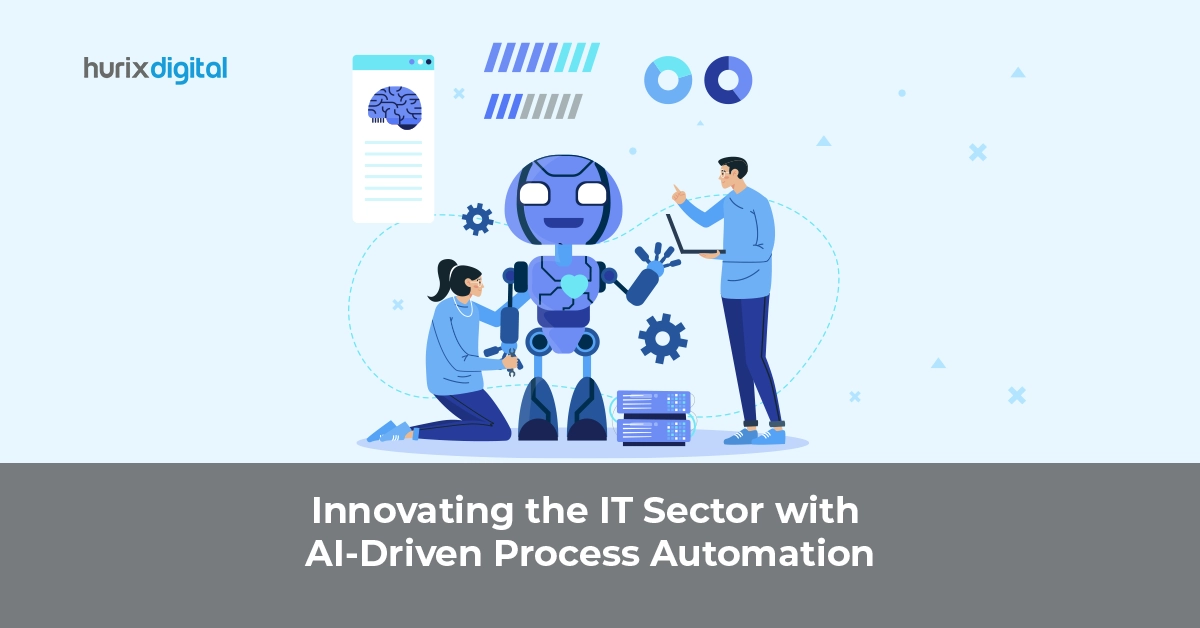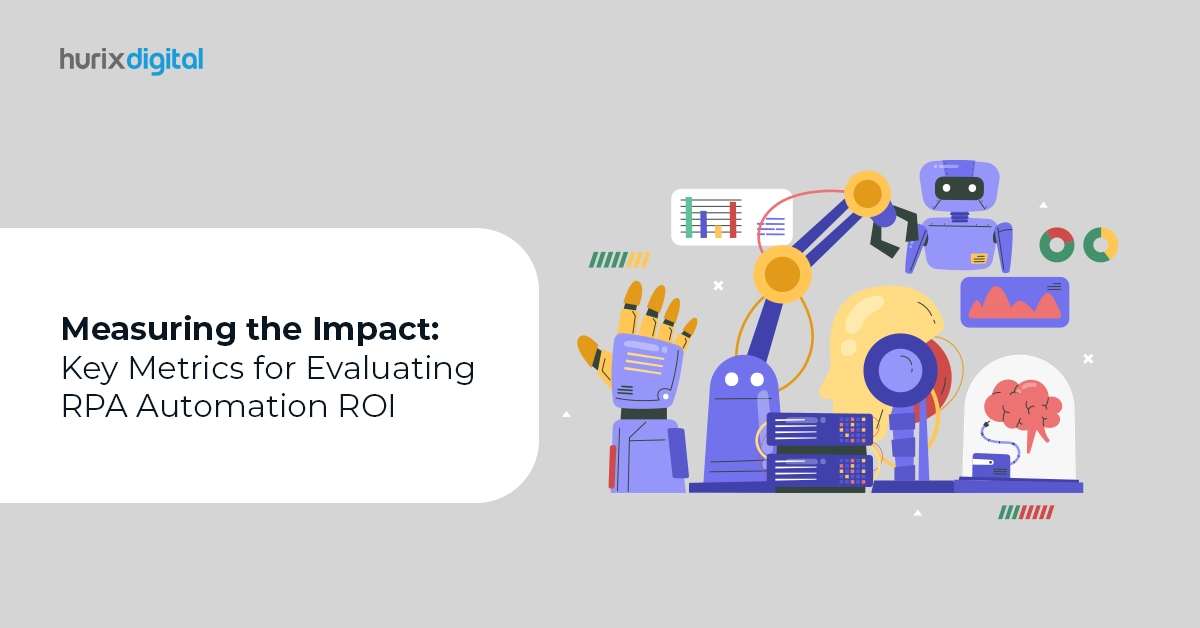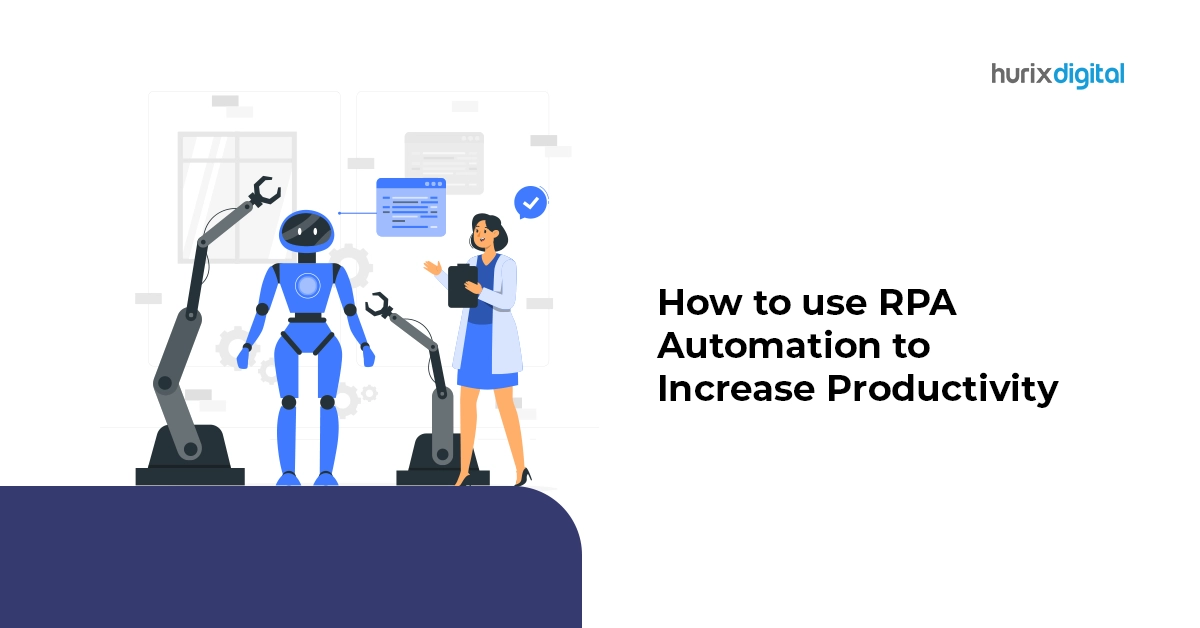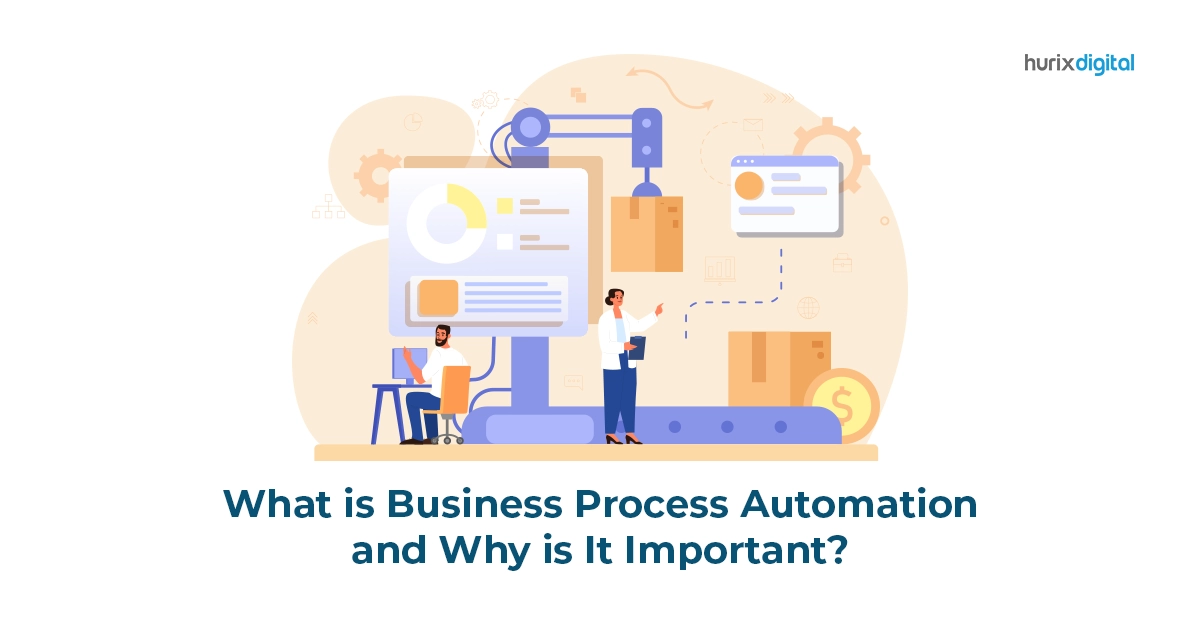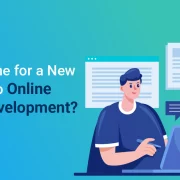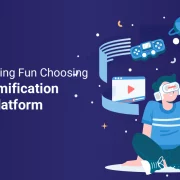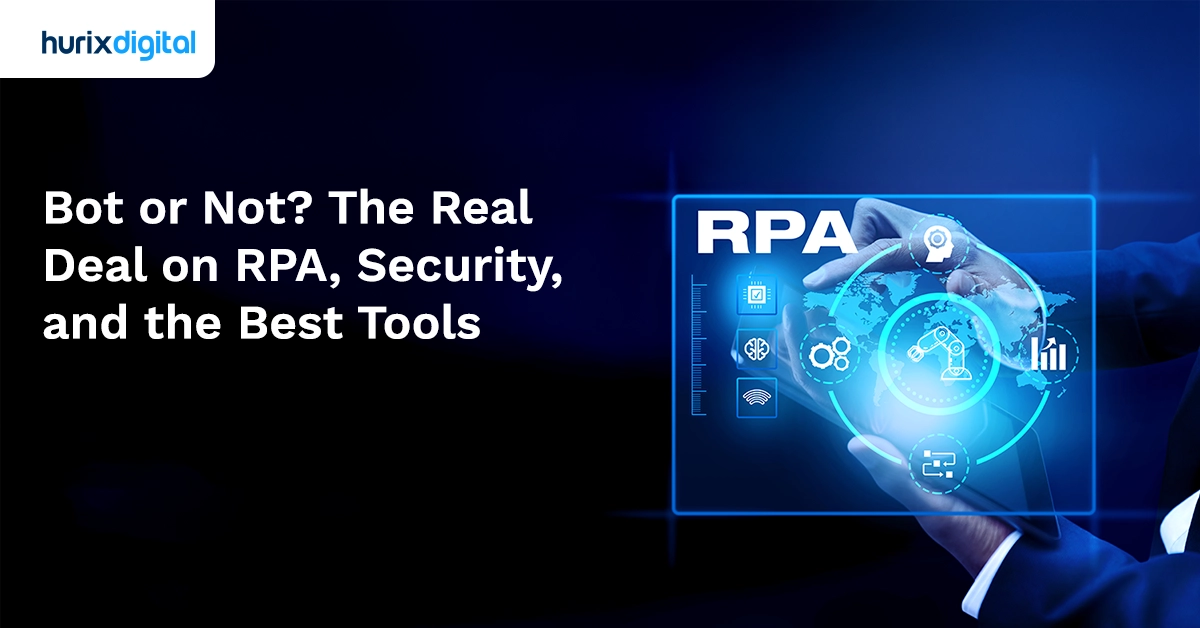
Bot or Not? The Real Deal on RPA, Security, and the Best Tools
Summary
Explore the truth about RPA security—how bots streamline operations while keeping threats at bay. Learn about the best RPA tools, key security challenges, and how to safeguard your RPA implementation strategy. Stay ahead with insights on securing your digital workforce!
RPA, also known as robotic process automation, is a process that allows the elimination of repetitive and rule-based tasks through automation. RPA implementation involves deploying software bots that mimic human interaction and complete their assigned tasks. Predefined rules and instructions are programmed into the bot to optimize its automation capacities fully.
Due to the constantly evolving digital world, business operations from a wide range of industries are now utilizing RPA automation to increase productivity, prioritize tasks, reduce operation costs, and enhance scalability. Through RPA and its extensions like artificial intelligence, machine learning, etc., more than 300 million jobs can be automated.
For instance, many organizations already utilize the recently released Chat GPT to free their workforce from the burden of mundane tasks.
If you are also looking to utilize RPA functionalities and automation software to improve your employee experience, you are at the right place. Mentioned below is a comprehensive guide to popular RPA tools and platforms.
Table of Contents:
- What is RPA Automation?
- Addressing the Need to Secure Data in RPA Implementations
- Potential Vulnerabilities Posed by RPA Implementation
- Mitigating Risks Associated with RPA Implementation
- Developing RPA Security Breach Incident Response Plan
- What are the Advantages of RPA Software?
- RPA Technology Applications Across Various Industries
- Important Features of RPA Tools
- Conclusion
What is RPA Automation?
RPA automation is a technological tool that enables organizations to automate all or part of their processes, workflows, tasks, and techniques with a view to:
- Streamlining the operations.
- Improving efficiencies.
- Reduce manual interventions.
- Improve accuracy.
Using RPA software, organizations can design intelligent robots to undertake tasks that involve information processing, data extraction, system navigation, workflow process management, business process management, and much more.
Businesses can automate tasks by delegating them to RPA tools, such as booking tickets, generating and tallying invoices, or performing security checks. Their operations and intervention can be customized and controlled, making them reliable tools for streamlining business workflows.
Addressing the Need to Secure Data in RPA Implementations
RPA involves processing and manipulating vast amounts of data, including sensitive and confidential information. This data encompasses customer details, financial records, intellectual property, and more. According to Infosys BPM, data leakage and fraud are the two major RPA security risks.
Consequently, organizations must proactively consider these potential RPA security risks and implement robust security measures to safeguard their data assets. The increasing prevalence of cyber threats and evolving regulatory frameworks further underscore the need for data protection solutions.
Data breaches not only compromise sensitive information but also lead to reputational damage, financial losses, and legal ramifications. To protect data against such risks, organizations must prioritize data security and incorporate it as an integral part of their RPA strategy.
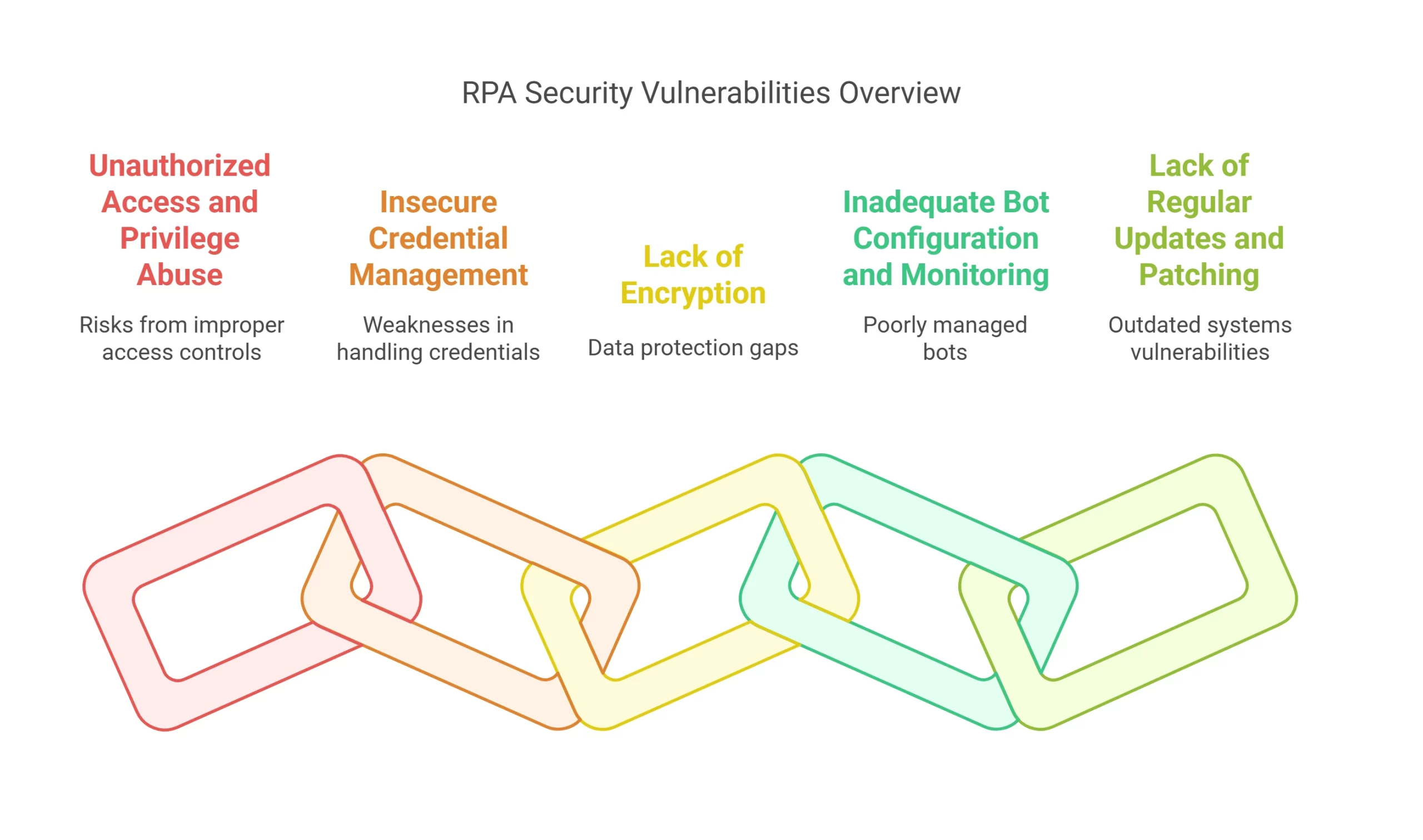
Potential Vulnerabilities Posed by RPA Implementation
While Robotic Process Automation offers numerous benefits in terms of efficiency and productivity, it also introduces potential vulnerabilities and security risks that organizations must address to ensure data security. Here are some of the key vulnerabilities that can arise during RPA implementation:
1. Unauthorized Access and Privilege Abuse
One of the primary vulnerabilities in RPA lies in the access controls and privileges granted to bots. Without proper configuration and monitoring, unauthorized individuals may gain access to sensitive systems or data. Additionally, if bots are granted excessive privileges, they can inadvertently or maliciously abuse their access, leading to data breaches or security attacks.
2. Insecure Credential Management
RPA bots often require access to various systems, databases, or applications. If credentials used by bots are not securely managed, such as storing them in plain text or using weak authentication methods, they become attractive targets for attackers. Compromised credentials can grant unauthorized access to critical systems and lead to data theft or unauthorized manipulations.
3. Lack of Encryption
RPA involves the processing and transmission of sensitive data. If this data is not properly encrypted, it becomes susceptible to interception and unauthorized access. Encryption should be implemented both at rest (data storage) and in transit (data transmission) to protect sensitive data from being compromised.
4. Inadequate Bot Configuration and Monitoring
RPA bots need to be configured correctly to ensure they perform their tasks and avoid unintended consequences. Insufficient or improper configuration can lead to errors, data leakage, or unauthorized actions. Additionally, organizations should implement robust bot security mechanisms to detect any unusual behavior or deviations from expected patterns, helping identify potential security incidents promptly.
5. Lack of Regular Updates and Patching
RPA software and the underlying infrastructure may contain vulnerabilities that attackers can exploit. Failure to regularly update and patch RPA tools and associated systems increases the risk of security breaches. Keeping RPA software updated with the latest security patches and updates is crucial to prevent potential exploits.
Mitigating Risks Associated with RPA Implementation
Developing RPA solutions with a strong focus on security is essential to protect sensitive data and maintain the integrity of automated processes. According to Gartner, the first step to ensure RPA security is to ensure the accountability of the bot’s actions.
Here are five secure development practices specifically tailored for RPA initiatives that businesses must comply with:
- Implementing secure coding practices is crucial to prevent vulnerabilities and ensure the resilience of RPA solutions. This includes practices such as input validation, output encoding, secure error handling, and proper memory management.
- Conducting regular vulnerability assessments helps identify potential weaknesses in RPA software and infrastructure. Organizations can proactively detect and address RPA security risks, such as insecure API integrations, by leveraging automated scanning tools and manual reviews.
- Proper configuration management ensures that RPA components, such as bots and automation platforms, are securely configured. This involves implementing automation security defaults, disabling unnecessary features, and enabling secure communication protocols.
- Utilize secure development frameworks and libraries specifically designed for RPA. These frameworks provide pre-built security controls and functionalities, enabling developers to focus on secure coding practices without reinventing the wheel.
- Developers can proactively design and implement appropriate security controls by identifying potential RPA security threats and attack vectors early on. This includes considering data storage security, access controls, authentication mechanisms, and encryption requirements.
Developing RPA Security Breach Incident Response Plan
Developing an effective incident response plan is crucial to address and mitigate cybersecurity data breaches in RPA implementation. Organizations can ensure timely detection and recovery from security breaches by establishing a well-defined incident response framework. Here are the key steps to developing an incident response plan for RPA security breaches:
Step 1: Establish an Incident Response Team
Assemble a dedicated incident response team consisting of key stakeholders from IT, security, RPA operations, and legal departments. This team will coordinate incident response efforts, define roles and responsibilities, and ensure clear communication channels during security incidents.
Step 2: Define Incident Classification and Escalation Procedures
Establish a clear classification system to categorize RPA-related incidents based on severity and impact. This will enable the incident response team to prioritize their response efforts effectively. Develop escalation procedures that define the thresholds for escalating incidents to higher management levels, ensuring the timely involvement of decision-makers when necessary.
Step 3: Develop an Incident Response Plan
Create a comprehensive incident response plan specifically tailored to RPA-related incidents. The plan should include step-by-step procedures for incident detection, reporting, containment, eradication, recovery, and post-incident analysis. Document the roles and responsibilities of team members and any specific considerations related to RPA systems and data.
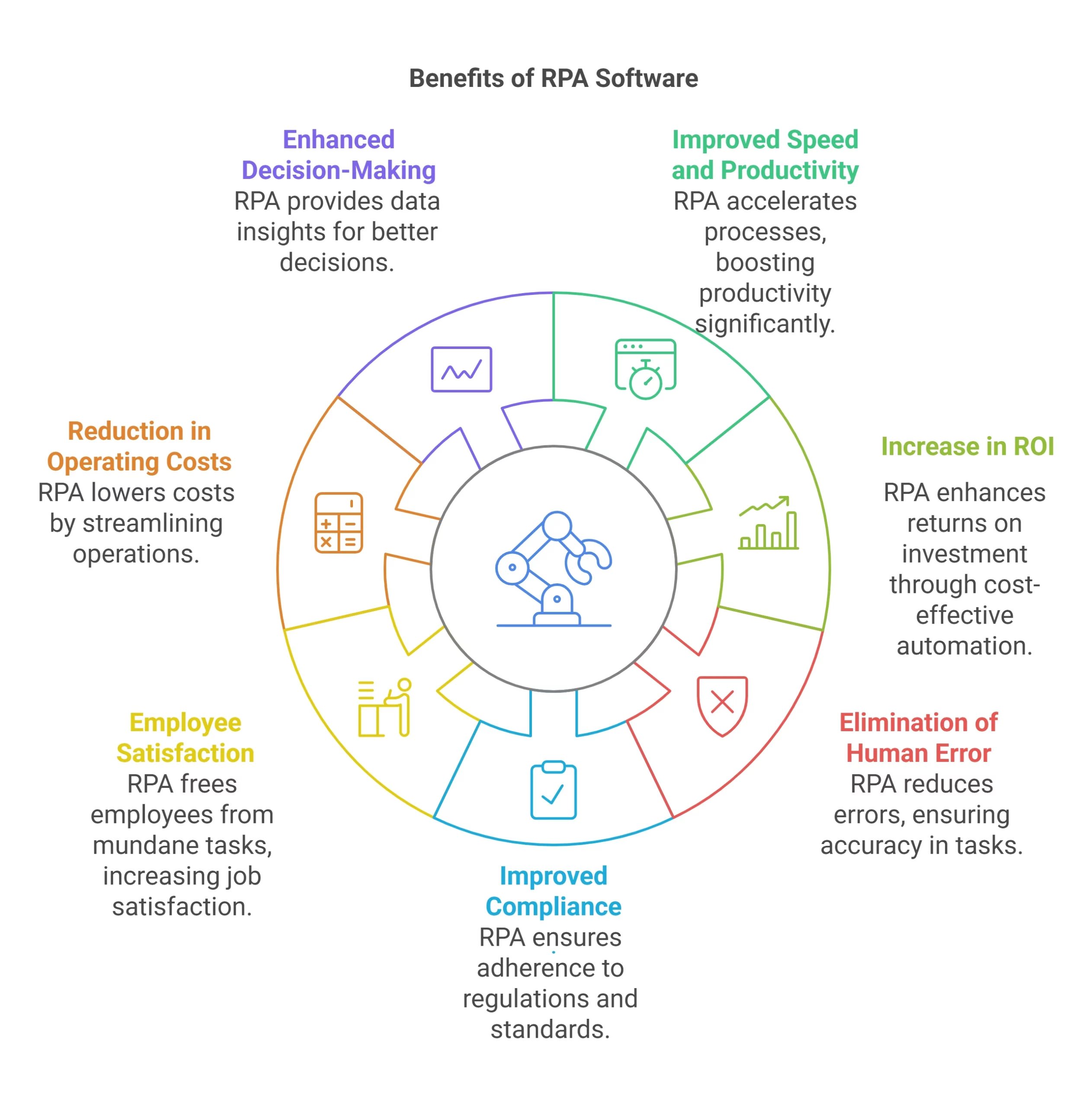
What are the Advantages of RPA Software?
Robotic process automation tools provide seven major advantages to businesses that are both tangible and intangible:
1.Improved Speed and Productivity
RPA tools help businesses automate repetitive tasks and apply rule-based operations for high-volume work. All these factors combine to deliver accelerated task completion without human intervention.
The human workforce can dedicate more time to mission-critical tasks, improving productivity.
2. Increase in ROI
As a consequence of improved productivity and accelerated task completion, a business can positively impact its ROI.
This is done by enabling better processes for cost management and saving a significant amount of time that would otherwise be wasted on repetitive processes.
3. Elimination of Human Error
Where there are humans involved in a task, there will be errors. No manner of undivided attention can help a professional complete a task error-free.
However, that is not the case with RPA tools that run purely on mathematical algorithms, helping businesses eliminate errors from processes.
4. Improved Compliance
Every organization has a set of policies and regulations that all the processes and operations are required to adhere to.
Automation of compliance checks using RPA software enables businesses to better reinforce their policies directly at the touchpoint.
5. Employee Satisfaction
Repetitive tasks such as data entry are the most time-consuming activities in which employees invest a lot of time.
By automating these tasks, your organization can improve levels of employee satisfaction by removing this responsibility from their task lists.
6. Reduction in Operating Costs
Implementing robotic process automation software is a one-time investment that lasts for years.
Business process automation eliminates the need for the workforce to be hired for the job. This enables businesses to lower their operating costs considerably.
7. Enhanced Decision-Making
RPA tools provide C-suite professionals with handy analytical data and insights that enable them to deliver better decisions.
Data-backed strategies help with business growth in the long term and also work to improve the overall customer experience.
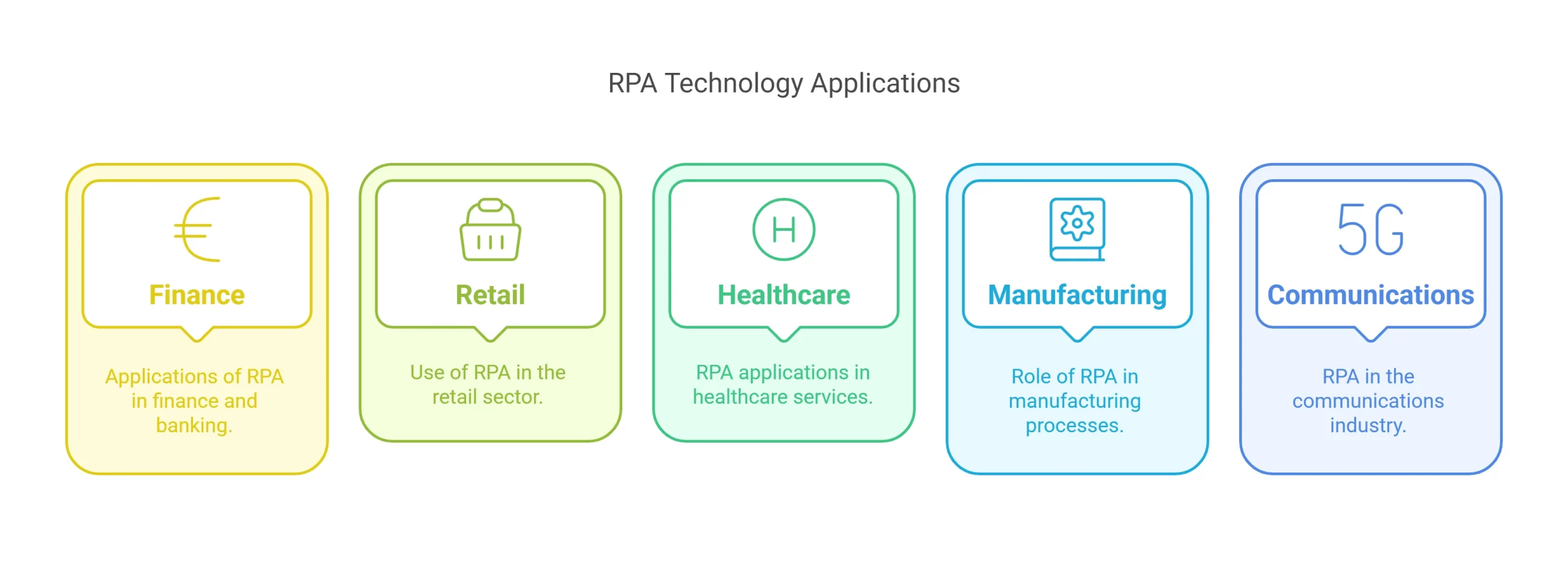
RPA Technology Applications Across Various Industries
Five major industries are making extensive use of RPA technology to improve their workflow process management:
1. Finance and Banking
The financial services and banking sector has extensive utility for RPA software. The major aspects that this technology helps businesses in this industry are:
- Automating data validation.
- Creating reports.
- Processing loan claims.
- Updating loan data.
Managing customer accounts.
2. Retail Industry
The digital retail industry sees a heavy amount of customer traffic which necessitates the automation of several aspects to improve business process management:
- Updating online inventory.
- Importing email sales.
- Keeping the product information updated across all channels.
- Updating production data from manufacturers.
3. Healthcare Industry
One of the most important applications of RPA technology is to enable healthcare establishments to automate several patient-centric services for a seamless treatment experience:
- Processing patient data and migrations.
- Processing the medical bills.
- Processing insurance claims.
- Storage and organization of patient records.
4. Manufacturing Industry
Manufacturing operations, when working at larger scales, can achieve high efficiencies and accuracy with RPA technology implementation at the facility:
- Automating logistics data.
- Comparing product pricing.
- ERP automation.
- Automating data monitoring across various IoT systems and equipment.
5. Communications Industry
Robotic process automation tools have delivered great advantages to the telecommunications industry in the following forms:
- Creating backups of client information systems.
- Data uploading.
- Collection and consolidation of phone data.
- Generating analytics for competitor pricing and product demand and comparison.
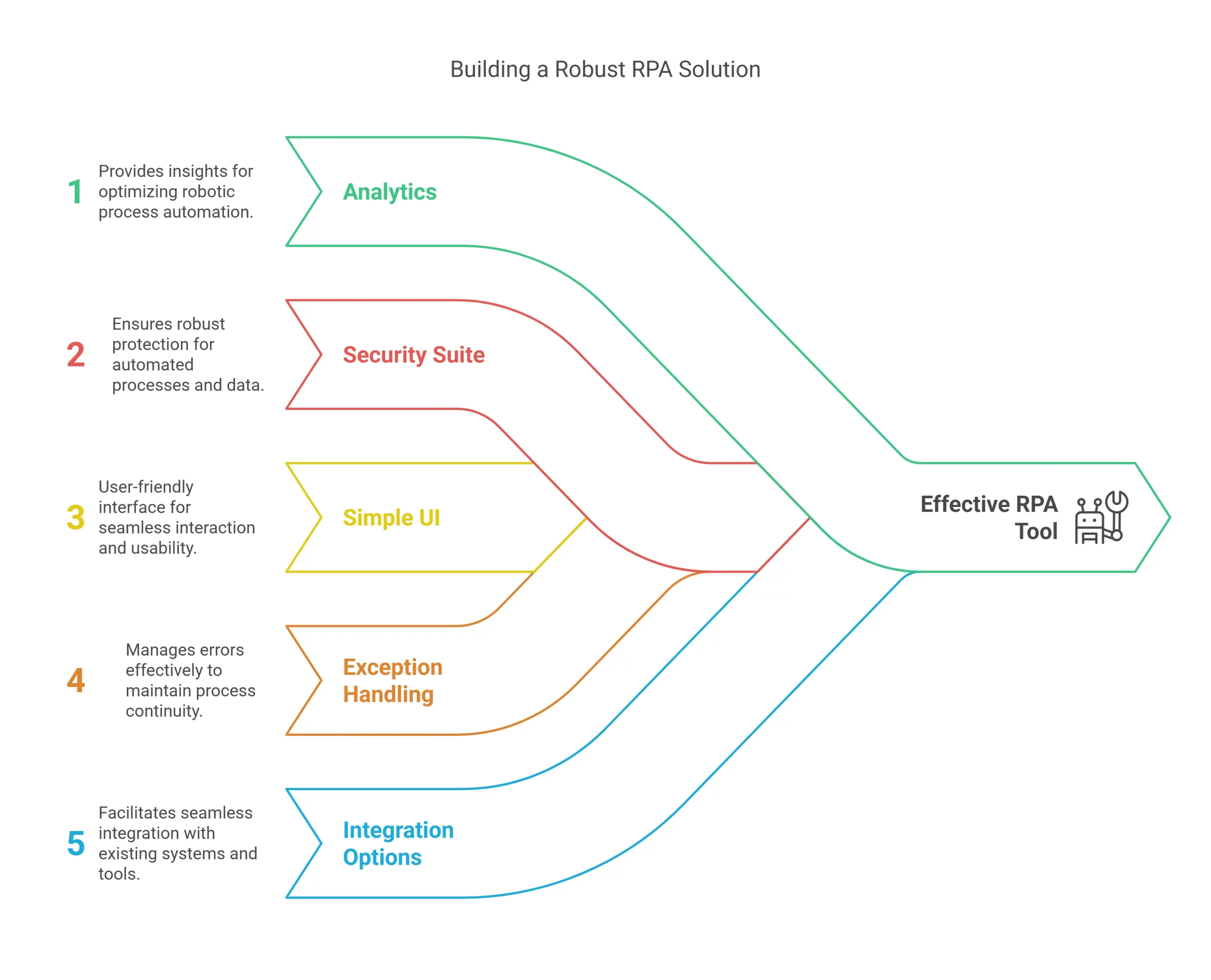
Important Features of RPA Tools
Every process automation tool has essential features that make it powerful. Listed below are some of these common features:
1. Analytics
Every RPA tool comes equipped with an extensive analytical suite that helps you keep track of the performance of each robot under operation.
The data thus collated helps you understand the overall performance of your organization.
2. Security Suite
RPA software also comes equipped with a full-fledged security suite that lets you customize authorization and access controls. You can set permissions and conditions for data access that help you improve data administration.
3. Simple UI
Robotic process automation software essentially has a simple interface that lets you customize your bots for various processes and workflows. You can easily navigate to the Task Editor features and edit or customize your bots for specific purposes.
4. Exception Handling
While every process has a predetermined workflow, sometimes exceptions do occur. A good RPA tool enables the creation of rules that let you prescribe protocols for handling such exceptions automatically.
5. Integration Options
The most important feature that a process automation tool can provide a business is the capability to integrate with existing systems seamlessly. You will typically find readily available plugins or features that let you integrate and connect everything.
Conclusion
It is important to keep in mind that robotic process automation (RPA) is constantly evolving at a rapid pace. Numerous tools and platforms are continually being introduced in the market. It can be very difficult to select one from the various options available. If you require highly robust RPA automation tools and software, you can contact us at Hurix Digital.
We are well known globally for providing highly advanced digital services. We can address all your RPA needs and requirements. Reach out to our expert team now and get started. Hope to see you soon!

Currently serving as the Vice President of Technology Delivery Operations at HurixDigital, a prominent global provider of digital content and technology solutions for publishers, corporations, and educational institutions. With over 16 years of experience spanning EdTech and various domains, I hold certification as a SCRUM Product Owner (CSPO). My expertise includes operations, finance, and adept people management skills.
